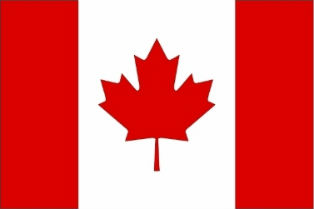What is the agreement about? In the last six years, Canada has concluded free trade agreements with nine countries: Colombia, Peru, Jordan, Panama, Honduras, and the European Free Trade Association that includes Iceland, Liechtenstein, Norway and Switzerland.
Today, Canada is about to enter into the Comprehensive Economic and Trade Agreement (CETA) with the European Union, the second biggest free trade agreement after NAFTA. Negotiations concerning this agreement were launched at the EU-Canada Summit in Prague on the 6th of May 2009. The CETA agreement will cover all issues outlined in the Trade and Investment Enhancement Agreement between the EU and Canada (TIEA) that has been left unfinished. It included issues such as trade and investment facilitation, competition, mutual recognition of professional qualifications, financial services, e-commerce, temporary entry, small and medium-sized enterprises, sustainable development, and sharing science and technology. This will now be expanded in the CETA agreement with a much broader and more ambitious scope.
What is the latest development in the agreement?The CETA negotiations have been made a priority in the international trade agenda of the Canadian Government, and further negotiations are moved forward as quickly as possible. A significant progress has been made across many areas including goods, services, investment, government procurement and others. Only a few issues remain to be resolved before the CETA agreement is concluded, and the deal is expected to be sealed by the summer of 2012.
How does it benefit Canadian companies?Benefits of the CETA agreement to Canadian companies will be significant; bilateral trade is expected to boost by 20%, providing $12 billion boost to Canada’s economy. This equals to a $1000 increase in income to an average Canadian family, or 80 000 jobs created. The agreements should also enhance investment, labour mobility, regulatory cooperation, the environment, science and technology, and should help small and medium sized companies to compete in an international market.
 Sectors that are expected to benefit from this agreement include aerospace, chemicals, plastics, aluminum, forestry, fish and seafood, automotive vehicles and parts, agricultural products, transportation, financial services, renewable energy, information and communication technologies, pharmaceutical, engineering and computer services. Canada, in return, will be able to import high value-added products such as machinery, transport equipment and chemicals, which are among the most popular products from the EU.
Sectors that are expected to benefit from this agreement include aerospace, chemicals, plastics, aluminum, forestry, fish and seafood, automotive vehicles and parts, agricultural products, transportation, financial services, renewable energy, information and communication technologies, pharmaceutical, engineering and computer services. Canada, in return, will be able to import high value-added products such as machinery, transport equipment and chemicals, which are among the most popular products from the EU.
As a single trading block, the EU represents Canada's second largest trading partner in goods and services. In 2010, Canadian goods and services exports to the EU totaled $49.1 billion. According to Statistics Canada, the EU is also the second largest source of foreign direct investment in Canada, with the stock worth $148.7 billion at the end of 2010.
Data sources:
http://tradelines.ghy.com/tag/ceta/
http://www.international.gc.ca/trade-agreements-accords-commerciaux/agr-acc/eu-ue/can-eu.aspx?view=d
http://ec.europa.eu/trade/creating-opportunities/bilateral-relations/countries/canada/
